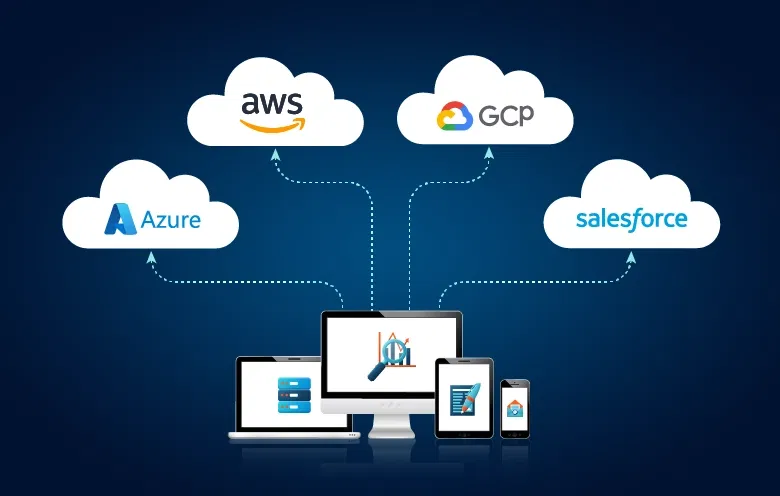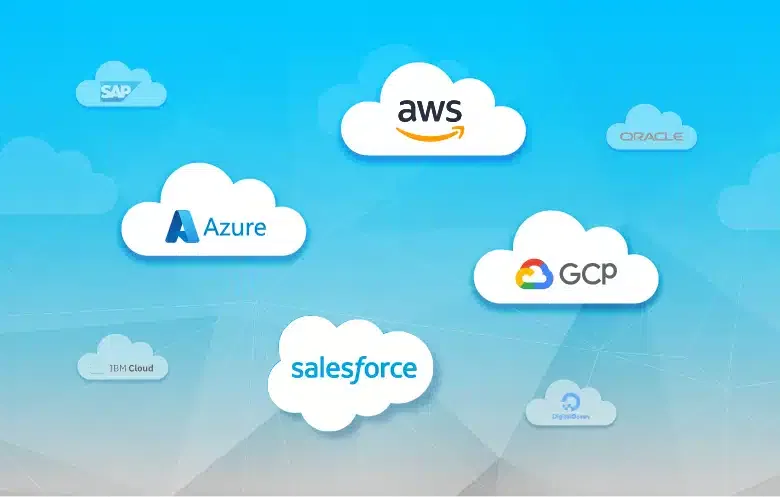With the advent of the Internet and digitalization, most modern businesses are desperately looking for the safest and most efficient ways to manage their data and processes. In this context, the question of on-premises versus cloud solutions has become critical for decision-makers like tech leaders, IT managers, and business leaders. Successful businesses must be cloud-based. Why? This question is at the heart of the strategic choices they face.
For example, on-premises infrastructure, with its complete control and high security, is a good fit for industries with compliance and performance issues. However, cloud-based setups offer a host of benefits such as flexibility, scalability, faster time-to-market, enhanced collaboration, and cost-saving options. These advantages make cloud solutions the ideal choice for businesses aiming at innovations and growth. This is why successful businesses must be cloud-based. Surprisingly, according to McKinsey & Company, only 20% of businesses use cloud technology regularly and at scale.
Hence, to help organizations find the shades of difference between on-premises and cloud, this article delves into the fundamentals of both, factors to consider in the decision-making, a comparative analysis of the influences that the final choice would have in the future of the business, what reputable sources mention on adopting cloud computing and how AWS migration services can help business leaders in embracing cloud technology.
Understanding the fundamentals of on-premises and cloud
On-premises infrastructure
On-premises infrastructure is equivalent to purchasing a custom-fitted house. It provides the tightest control, security, and customization possible. On-premises clients have their data center tied to their building, which allows them to keep an immediate eye on all IT assets. This necessitates a large initial cash outlay for hardware, software licenses, and hiring a dedicated IT squad to maintain the infrastructure. Even still, this has the most exceptional data sovereignty and is favored by enterprises bounded by regulatory compliance or processing confidential information.
Cloud computing
In contrast, cloud computing represents renting an up-to-the-minute apartment with all facilities. Cloud is a service that allows one to get into computing resources through the internet without owning and managing them while renting from the provider. This represents the opposite of capital expenditure (CapEx) as it shifts to operational expenditure (OpEx) and introduces pay-as-you-go prices that require neither large investments nor reserves. In addition, this elastic system implies an opportunity to scale resources immediately and be more agile and innovative than competitors. Cloud service providers invest heavily in security, offering a suite of compliance certifications and data protection measures.
Suggested: On-premises to AWS migration cut infrastructure costs by 31% on average – Get the step-by-step guide!
Hybrid cloud solutions
For many organizations, a hybrid cloud solution that combines on-premises and cloud environments offers a strategic compromise. It allows businesses to keep sensitive operations secure on-premises while leveraging the cloud for transformative, scalable projects. This approach supports a phased cloud migration strategy: companies transfer to the cloud progressively and on their agenda.
While this discussion offers a general assessment of the drawbacks and merits of each infrastructure model, an in-depth exploration of factors provides much-needed insights to help decision-makers grasp the implications for their firm and choose wisely based on its strategic goals.

Explore the best strategies to migrate to the AWS cloud
The cloud serves as a tool, not a destination. For insights on leveraging AWS services and cloud migration strategies, explore the whitepaper on migrating to AWS cloud.
Factors to consider before deciding between on-premises or cloud
When contemplating the transition to a cloud-based infrastructure or considering the retention of an on-premises setup, it’s vital to analyze essential factors carefully.
| On-premises | Cloud | |
|---|---|---|
Accessibility |
|
|
Flexibility |
|
|
Security |
|
|
Customization |
|
|
Maintenance |
|
|
By meticulously evaluating these factors, organizations can make informed decisions that align with their operational, financial, security, and compliance requirements. This thorough analysis is crucial for choosing the most suitable setup to support the business’s long-term success and growth strategies.
On-premises vs. cloud comparison
Comparing the features of on-premises and cloud setups is crucial for informed decision-making in infrastructure management. Consider the key aspects of cost, scalability, security, maintenance, and more before making a choice.
| On-premises | Cloud | |
|---|---|---|
| Cost |
|
|
| Scalability |
|
|
| Security |
|
|
| Maintenance |
|
|
| Accessibility |
|
|
| Performance |
|
|
| Customization |
|
|
| Compliance |
|
|
| Disaster Recovery |
|
|
| Collaboration |
|
|
| Innovation |
|
|
| Eco-Friendliness |
|
|
Companies that adopt cloud management services can realize up to a 69% decrease in unplanned downtime. Want to explore AWS cloud migration services?
What reputable sources mention on adopting cloud computing
McKinsey & Company
Podcast: Getting ahead in the cloud
Key statistic: Over 76% of global organizations are expected to have invested in cloud technology by 2026.
Value Realized: With cloud computing, organizations can cut operational costs by 25%, boost IT agility, productivity, and lead to faster market entry and higher revenue.
Hurix Digital
Report: 10 Key Benefits of Adopting Cloud Computing for Businesses
Key Benefits:
- Improved Customer Service: Cloud adoption enhances responsiveness and customer experience.
- Cost-Efficiency: Reduced infrastructure costs and pay-as-you-go models.
- Faster Implementation Cycles: Rapid deployment and agility.
Open Access Government
Report: Why Top Business Performers Are Adopting Cloud Computing
Key Insight: Large enterprises aim to migrate 60% of their digital infrastructure to the cloud by 2025 (including private and public hosting setups).
In summary, embracing cloud solutions offers tangible benefits such as improved customer service, cost savings, agility, and scalability. These findings underscore the strategic importance of cloud adoption for modern businesses. That’s why, successful businesses must be cloud-based.
Leverage our AWS migration services to empower your transition
Deciding whether to maintain an on-premises infrastructure or embrace cloud technology requires a tailored approach. On-premises setups provide unmatched control and customization, while cloud solutions excel in scalability and cost-effectiveness over the long term. For organizations seeking a middle ground, adopting a hybrid cloud strategy can be an effective bridge, offering a mix of stability and innovation. The best path hinges on a company’s specific needs, growth trajectory, and their importance to factors like autonomy, budget, and flexibility.
AWS has the largest market share of cloud infrastructure services. Hence, if your organization has resolved for on-premises to cloud migration, our cloud migration services can support your transition. We offer comprehensive assistance, from evaluating your operational demands to strategizing and implementing the shift. Partner with us to expedite your journey to the cloud. We ensure you get enhanced value and cost savings using AWS’s robust cloud infrastructure and Softweb Solutions’ dedicated migration expertise.



